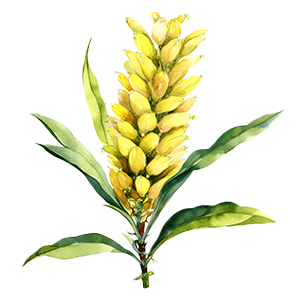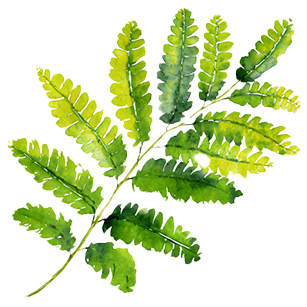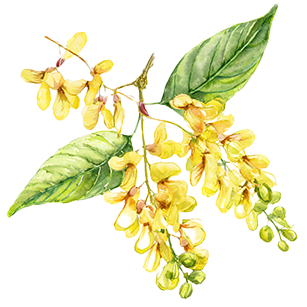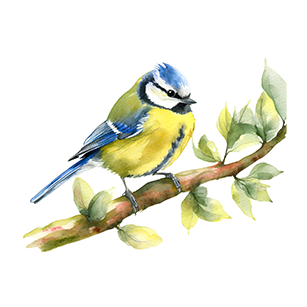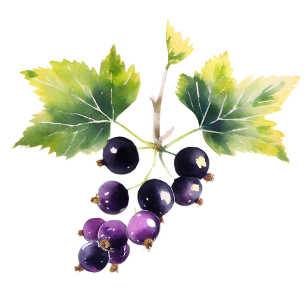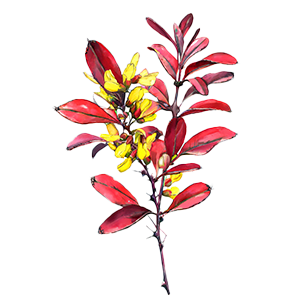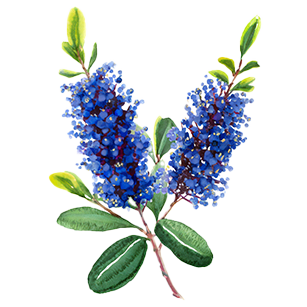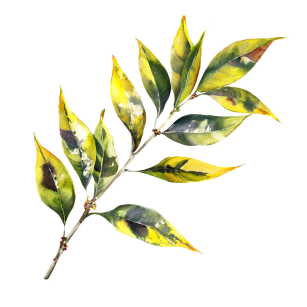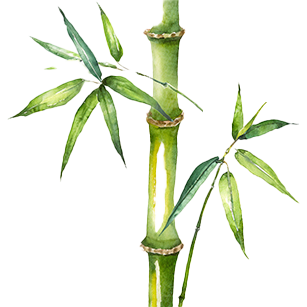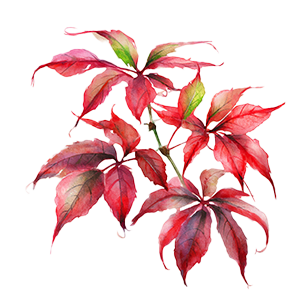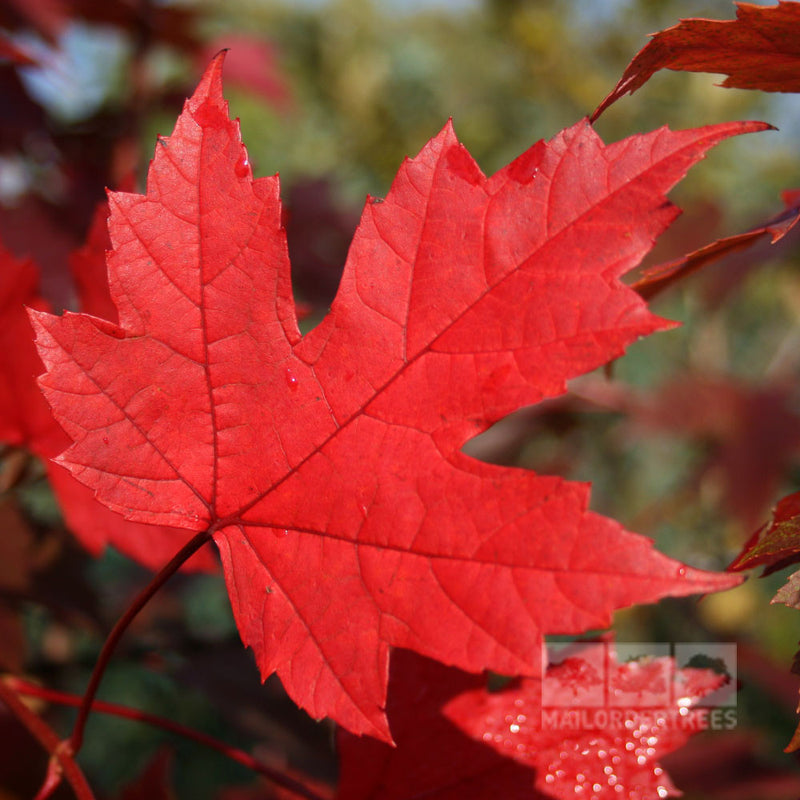Here at Mail Order Trees we are constantly amazed by the wonders of wildlife, and we do whatever we can to create the perfect environment for encouraging a whole host of creatures, bugs and birds to make a home on our tree lines and at our nursery. We have around 50,000 planted and container grown trees surrounding our nursery and we therefore see a vast array of wildlife nestled amongst our trees and shrubs. We often carry a camera when we’re out collecting trees just in case we see anything special and we have found lots of wonderful examples of just how amazing nature really is. Here are just a few of our favourites:
 Every spring we see birds making nests in and around our nursery, but this female blackbird picked a very unusual position to make her nest. Despite her brown colour, this bird is actually a blackbird, and it is only the adult males that have the black colouring. The young birds and the females have brown feathers and a distinctive orange-yellow beak. This mother created her nest in a stack of black crates in one of our poly tunnels, and when we spotted her unusual nesting position we worked around the stack of crates to avoid disturbing her. Soon after her nest was complete she laid her eggs and sat patiently on top of the eggs to incubate the birds. We regularly checked in on the mother and noticed her absence in late spring; we peered into the box and found two small fledglings in the nest. We did not photograph them at this time as they were very small and we didn’t want to distress their mother in case she was nearby, so we left it a couple of weeks before returning with our camera. When we came back the fledglings were much bigger and we managed to get a few pictures of them before they flew away from the nest. One of the best things you can do to encourage birds to make a home in your garden is to plant large trees for them to make their homes in, although, as you can see from our little blackbird, they don’t always choose the most conventional places to build a nest!
Every spring we see birds making nests in and around our nursery, but this female blackbird picked a very unusual position to make her nest. Despite her brown colour, this bird is actually a blackbird, and it is only the adult males that have the black colouring. The young birds and the females have brown feathers and a distinctive orange-yellow beak. This mother created her nest in a stack of black crates in one of our poly tunnels, and when we spotted her unusual nesting position we worked around the stack of crates to avoid disturbing her. Soon after her nest was complete she laid her eggs and sat patiently on top of the eggs to incubate the birds. We regularly checked in on the mother and noticed her absence in late spring; we peered into the box and found two small fledglings in the nest. We did not photograph them at this time as they were very small and we didn’t want to distress their mother in case she was nearby, so we left it a couple of weeks before returning with our camera. When we came back the fledglings were much bigger and we managed to get a few pictures of them before they flew away from the nest. One of the best things you can do to encourage birds to make a home in your garden is to plant large trees for them to make their homes in, although, as you can see from our little blackbird, they don’t always choose the most conventional places to build a nest!
 We found this large moth on one of our Malus Cardinal trees and immediately got the camera out. At first it was wary of us and revoked its wings to camouflage in with the leaves and the bark of the tree, but after a few minutes of us staying very still it spread its wings and flew from leaf to leaf. It landed on the floor right next to us so we managed to get the outstanding shot of it with its full wingspan on display. We got back to the office to research the moth and found out that it was the UK native ‘Privet Hawk Moth’. This moth is the largest UK native moth and it has a wingspan of around 12cm. You can spot this type of moth by its highly unusual pink and black stripes on its body and you will only ever see it in June and July. Sadly, many people regard moths as pests, but this is not always the case. Only a small percentage of moths are in fact pests, and people need to do more to encourage these creatures into their gardens as their numbers are in decline. You can plant trees like the Crataegus Paul’s Scarlet (or any other Hawthorn variety) to encourage moths into your garden, or if you need something a little smaller then they love honeysuckle (like the lonicera henryi). Planting either of these suggestions will invite moths into your garden and they will also create a natural habitat for a much larger range of wildlife too.
We found this large moth on one of our Malus Cardinal trees and immediately got the camera out. At first it was wary of us and revoked its wings to camouflage in with the leaves and the bark of the tree, but after a few minutes of us staying very still it spread its wings and flew from leaf to leaf. It landed on the floor right next to us so we managed to get the outstanding shot of it with its full wingspan on display. We got back to the office to research the moth and found out that it was the UK native ‘Privet Hawk Moth’. This moth is the largest UK native moth and it has a wingspan of around 12cm. You can spot this type of moth by its highly unusual pink and black stripes on its body and you will only ever see it in June and July. Sadly, many people regard moths as pests, but this is not always the case. Only a small percentage of moths are in fact pests, and people need to do more to encourage these creatures into their gardens as their numbers are in decline. You can plant trees like the Crataegus Paul’s Scarlet (or any other Hawthorn variety) to encourage moths into your garden, or if you need something a little smaller then they love honeysuckle (like the lonicera henryi). Planting either of these suggestions will invite moths into your garden and they will also create a natural habitat for a much larger range of wildlife too.
Another one of our great pictures is of this bee pollinating the Cercis siliquastrum (Judas Tree). Of course, seeing a bee pollinating a flower is not a particularly rare sight, but we thought that this picture really captured the beauty of the humble bumble bee. When we got back to the office we tried to identify the bee, and much to our amazement the markings indicated that it was a Pratorum Queen Bee. We were under the impression that queen bees did not leave the nest, but when we researched this we found out that the queen has to undertake a mass pollination in early spring before she makes her nest. The queen then stores the pollen alongside a wax which she secretes from her body; she lays her first brood of eggs, and after this point she does not leave the nest. We were very lucky to capture this queen, and without her frantic spring pollination her colony would not have had any chance of survival. We rely on bees for pollinating our flowers and without them many varieties of flowers would die out and our fruit and vegetable yields would diminish.
There are many ways of encouraging these delightful little creatures into your garden, and planting lavender (lavandula hidcote), escallonia (Donard Seedling is a great variety), or a crab apple tree (malus) if you have a little more room, will make your garden a bee-friendly zone. You can even purchase a bee hotel to create a home for solitary bees, and you will get to enjoy seeing them dart in and out of a little habitat that you have created just for them.
Finally, the last of our pictures is of a very popular bush that is a new addition to our website. Our first home-grown batch of buddlejas (buddleias) are now for sale on the website and these are extremely popular with butterflies. These bushes are so synonymous with the decoratively winged creatures that their common name is in fact the ‘butterfly bush’.  The butterfly in the picture is a nymphalidae ‘Peacock’ male butterfly and you can identify this variety by its highly striking ‘eyes’ that are on the upper handwings. Butterflies are a national favourite for gardeners and their vast array of patterns, shapes and sizes makes them seem very special indeed. If you have young children visiting your garden then try planting buddlejas or other fragranced flowers and setting up a butterfly watch – you can even have a look online to see what you’ve found and you can share your findings with others on the butterfly conservation website. Children love recording the prettily patterned visitors and it’s a great way of introducing young children to the concept of variety in nature.
The butterfly in the picture is a nymphalidae ‘Peacock’ male butterfly and you can identify this variety by its highly striking ‘eyes’ that are on the upper handwings. Butterflies are a national favourite for gardeners and their vast array of patterns, shapes and sizes makes them seem very special indeed. If you have young children visiting your garden then try planting buddlejas or other fragranced flowers and setting up a butterfly watch – you can even have a look online to see what you’ve found and you can share your findings with others on the butterfly conservation website. Children love recording the prettily patterned visitors and it’s a great way of introducing young children to the concept of variety in nature.













